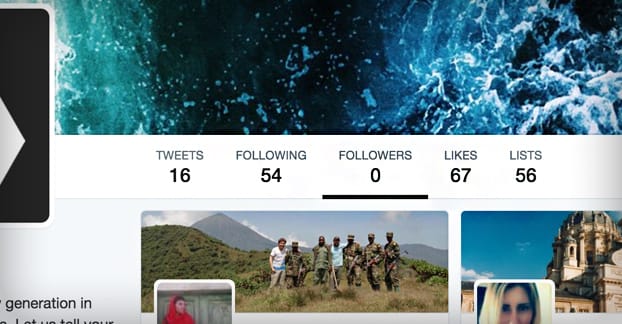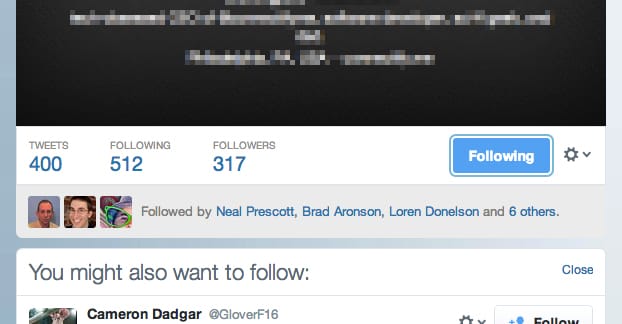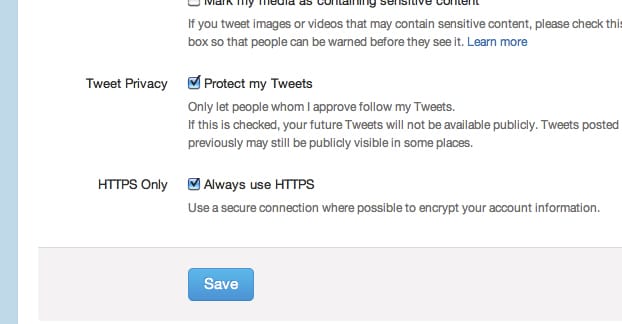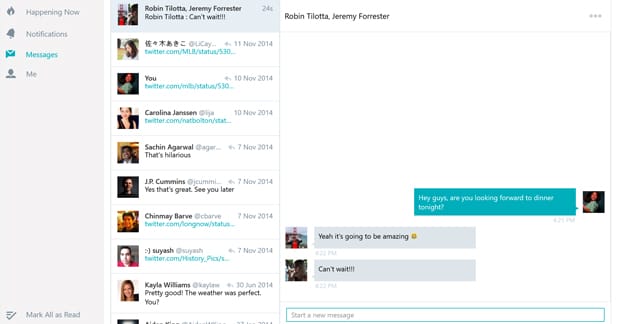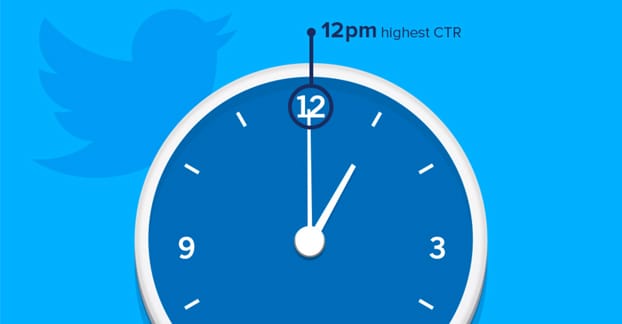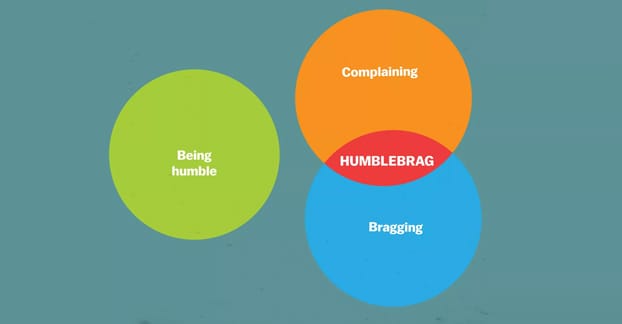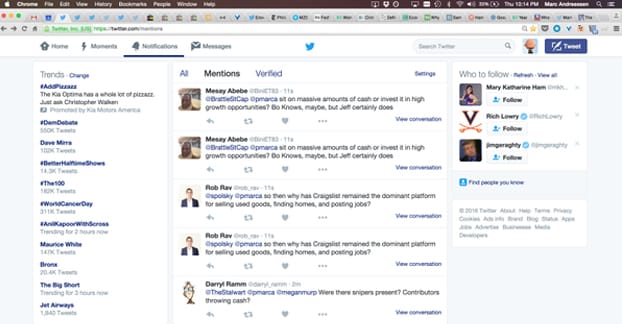On Twitter, if you want to survive, you need a constant influx of new followers. Individual people will come and go, but what you need is sustained growth. That’s why, once you’ve been using the platform for a while, you need to look at your situation and ask yourself; why aren’t I getting any new followers? Well, here are some of the most common reasons. Check to see if you fit the description.
Profile Issues
The following issues are all problems with your profile and the way you have things set up. Sometimes you’re failing to gain followers just because your bio isn’t attractive enough.
Your Profile Picture Has Egg on Your Face
Face it: if you’re going to try to grow on Twitter, you’re going to need to do it with a profile you’ve put some effort into. If you’re still using Twitter’s default egg icon – get it, with their bird theme? – then you’re just wasting your time.
You look like a fake account or a spambot, no matter what your content happens to be. People are going to ignore you no matter how much you try to engage them, simply based on that picture.
Your Profile is Incomplete
Beyond just changing your profile picture, you need to work to fill out your profile completely. That means a bio, a website link, a cover photo, a pinned tweet, and maybe even some tweeted media so there’s something there on the sidebar if someone happens to look. You can read more about a full profile over here. It pays to pay attention to every little detail and use your space to its fullest.
You’ve Branded Yourself a Guru, Maven or Ninja
Unless your brand is specifically something like TrackMaven or Marketing Ninja, you shouldn’t be using these sorts of terms. They come across as bragging and trying to appear as though you’re more skilled and more important than you actually are. Even calling yourself an expert can be a bad idea. Just be you. Twitter is a very casual platform, so unless you’re actually widely regarded as an expert, don’t claim to be something you’re not.
Your Bio is Third Person
For whatever reason, people like to write their bios in the third person. On Twitter, though, this just makes it look like your account is either unofficial or managed by someone other than you.
People come to Twitter for the personal connection. Seeing “Steve is a social media expert with 10 years of experience” in the bio just makes people think someone else wrote it. Third person is fine for formal settings, but not so much on Twitter.
Action Issues
These issues are problems with the way you act on Twitter. They don’t have much to do with your tweets themselves; rather, they’re problems with the way you respond to people, follow people, or use your profile in general.
You’re Exploiting FollowBackFriday
In the early days of Twitter, etiquette existed where if someone follows you, you follow them back. It was considered a simple bit of commonplace politeness. These days, though, that technique has been driven into the ground by black hat spammers. Following people back – or trying to churn followers to grow yourself via their followbacks – isn’t going to get you anywhere.
You’re Following Way More Than Follow You
Some people – not everyone, but a lot of users – pay attention to your follower and followed counts. If you’re following 10,000 users but only have 500 following you, something’s up. Either you’re trying to churn followers or you’re not generally a content producer.
In either case, I don’t want to follow you, because you don’t look like you’re pushing anything of value. Prune down that follow list and use Twitter Lists instead. It will make your feeds more manageable and give you a better ratio.
Your Tweets are Posted By a Robot
Whenever you schedule automatic cross-posting between sites, the posts will follow a certain template. That template is going to become obvious to users, and those users will tend to ignore that kind of post. If it’s only once in a while, that’s fine; if it’s on a constant basis, people figure your Twitter isn’t worth following. If they want to find your content, they’ll find where you’re actually posting it originally and follow you there instead.
You Tweet at Strange Times
Social media timing is becoming more important as more and more people take to the metaphorical streets. There’s such a crush of content that you need to be tweeting when people are active to get their attention. Unlike some sites, your content won’t be there when someone logs on later; they only see what is chronologically most recent and relevant. If you’re posting at 3am or something, no one is going to see your messages and they won’t follow you.
Your Account is Protected
You might think that protecting your account would increase follows. After all, if someone wants to see your content, they need to follow you. It’s like the old Facebook like gates.
Unfortunately, that doesn’t work on Twitter. They assume you’ve protected your account because you’re spammy or because you’re inactive. Worse, a protected account gives you no SEO value to your tweets, so it’s hurting you in more ways than one.
Your Account is Suspended
On rare occasions I’ve seen people set up automatic posting through a social CMS and have more or less ignored Twitter, then wondered why it doesn’t work. When I check, I find they were suspended for some reason or another. A suspended account, obviously, isn’t going to grow. Don’t break the rules!
You’ve Authorized Spammy Apps
Sometimes you’re driving away users and you don’t even know it. You’re doing this by authorizing apps to use your account, which then do use it – to post advertising tweets to your feed without manual approval. People see your spam and they assume you’re doing it intentionally, or else they assume you’ve been hacked. Neither one is a selling point, so they unfollow you and leave.
You Ignore @Mentions and DMs
When someone mentions you or sends you a direct message, they’re expecting a response, a retweet, or some kind of engagement – even just a like. If you’re not doing any of these things, they’re going to lose interest in you.
Twitter is a very engagement-centric platform, which is why it’s used so prominently for customer service and other direct associations. Make use of it the way it benefits you the most, by engaging with your followers.
Tweet Issues
These issues are problems with your tweets, either with the content or with the presentation. You may notice that the majority of this article is here; that’s because tweeting is the primary mode of communication, so if you’re not tweeting properly, you’re not going to succeed.
You’re Tweeting Far Too Often
There’s not really a rate limit on Twitter, at least not one that a reasonable poster is ever going to hit. If you’re hitting it, you’re tweeting way too often. In general, you should keep your tweets limited to 1-2 per hour.
If you’re tweeting more often, it should be a special occasion, like livetweeting a special event. If you regularly throw up all of your daily posts in the same half-hour span, it’s going to come across as spam and people are going to get sick of seeing you drown out their feed.
You’re Not Tweeting Often Enough
The inverse of the previous problem is when you’re not posting often enough. If you’re only tweeting 1-2 times per week, you’re going to get lost in the shuffle. Most people aren’t even going to realize that you’re posting at all, they’ll think your account has gone inactive. You’re also doing yourself no favors with Twitter’s attempt at a filtered feed, which prioritizes more frequent content contributors. Post frequently, at least twice per day.
You’re Humblebragging
The humblebrag is the act of posting about something great, expensive, or otherwise brag-worthy by downplaying it. For example, complaining that you scratched the screen of your brand new iPhone is a humblebrag.
It’s irritating for most people, and it drives people away. You’re doing yourself no favors by being a braggart, overt or covert.
Your Tweets are Entirely Marketing
Who wants to be on the receiving end of constant commercials? I certainly don’t. The increasing trend of cable cutting in the US is proving that young people don’t either.
Young people are on Twitter, and they don’t want to see your ads either. There’s already a flood of sponsored content and ads in Twitter feeds; don’t add to it with organic sales ads. It’s okay to post one occasionally, but if it’s all you post, you’re just driving people away.
Your Tweets are Garbage
No offense to people like Carrie Fisher or Cher, but their tweets tend to be so obtuse with annoying mojis and abbreviations in place of words that it looks like a code more often than it looks like an English post. No offense to you, dear reader, but you’re probably not as famous as they are and thus can’t pull off the crazy anywhere near as effectively.
You’re Always Negative
A negative sentiment constantly drives people away, because they don’t want to have that kind of depression or anger on their feeds all the time. Most people experience enough stress and negativity in their lives, at their jobs, or with their families that they go to social media to escape. When you’re a constant source of negativity there as well, you’re just going to drive them further from you.
You’re Frequently NSFW
A lot of people on Twitter are there browsing during work hours, or at work. Posting content that is not safe for work – pornography, erotica, implied either, violence, and other such content – will keep people from following you. Many people browse Twitter in a public place and don’t want that kind of content to show up at potentially embarrassing times.
You Tweet the Same Thing Too Often
Repeating the same tweet is actually against the rules on Twitter, and to avoid people skirting the rules, they won’t even tell you how frequently is too frequently. Not only can it drop followers from your list, it can get you suspended for spam.
Now, common social media marketing advice is to post your messages several times, right? Just make sure the message is different each time, but include the same link.
Your Tweets are Off Topic for Your Audience
You’re a brand and at the end of the day, you’re building a branded Twitter with a focused audience. If you’re posting too much outside of the interests of your audience, it will be hard to retain them. They followed you for a reason, generally a specific type of content you post. If you’re posting something else more often, they’re going to unfollow you because it’s not what they wanted to see.
You Spam Gratitude
One of the most annoying things a Twitter user can do is thank everyone whenever someone follows them or retweets them. If you’re posting a “thanks” comment to every response, every follow, and every action, you’re going to look like an over-eager moron, or a spammer, or a bot. None of those are a good look for you.
Hashtags are great on Twitter, but if you’re using too many in every tweet, you’re going to be mocked. It’s best to limit yourself to 2-3 at most; generally, 1-2 will suffice. If every other word of your tweet is a hashtag, you had better be doing it for comedic effect, because otherwise it’s just going to drive people away.
You Respond to Follows with Automatic DMs
Automated responses to DMs can be useful in some rare situations, but the “thanks for follow” DM is annoying and can cause users to immediately unfollow you. People don’t like their messages cluttered up with what they perceive to be spam.
If your actions or profile match any of these mistakes, you’re going to need to revise your social media presence. It’s not difficult to recover from most of these issues, you just need to have the self-awareness to do it.
